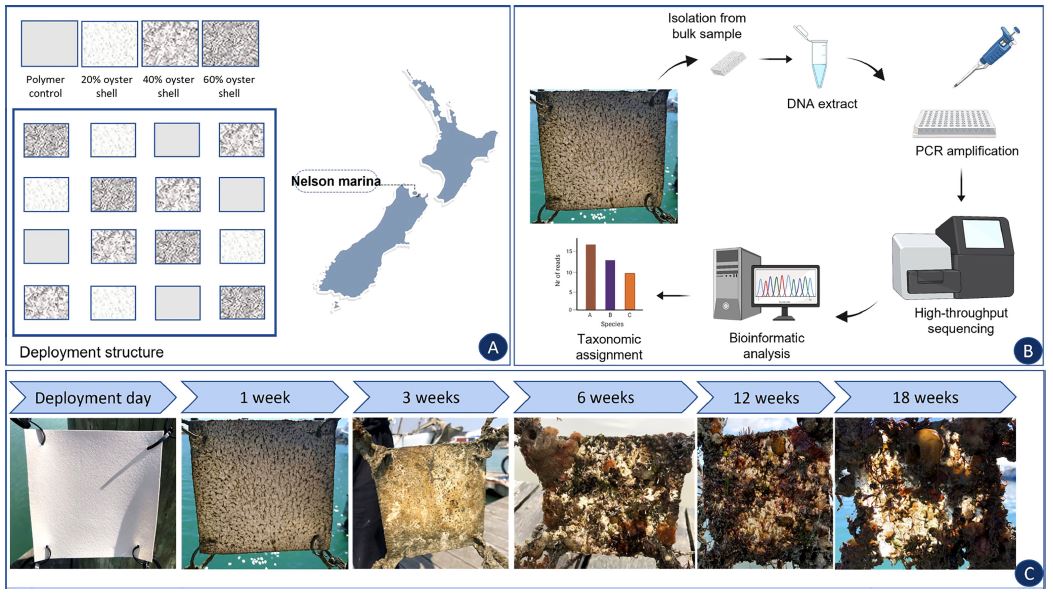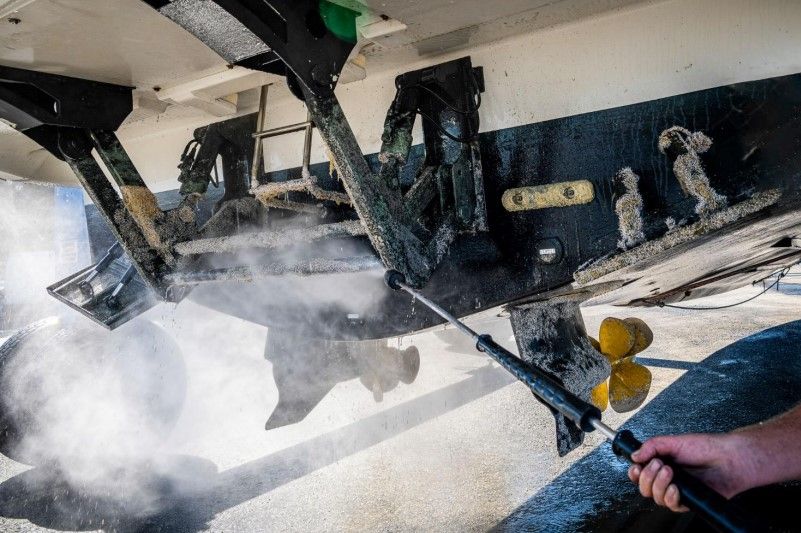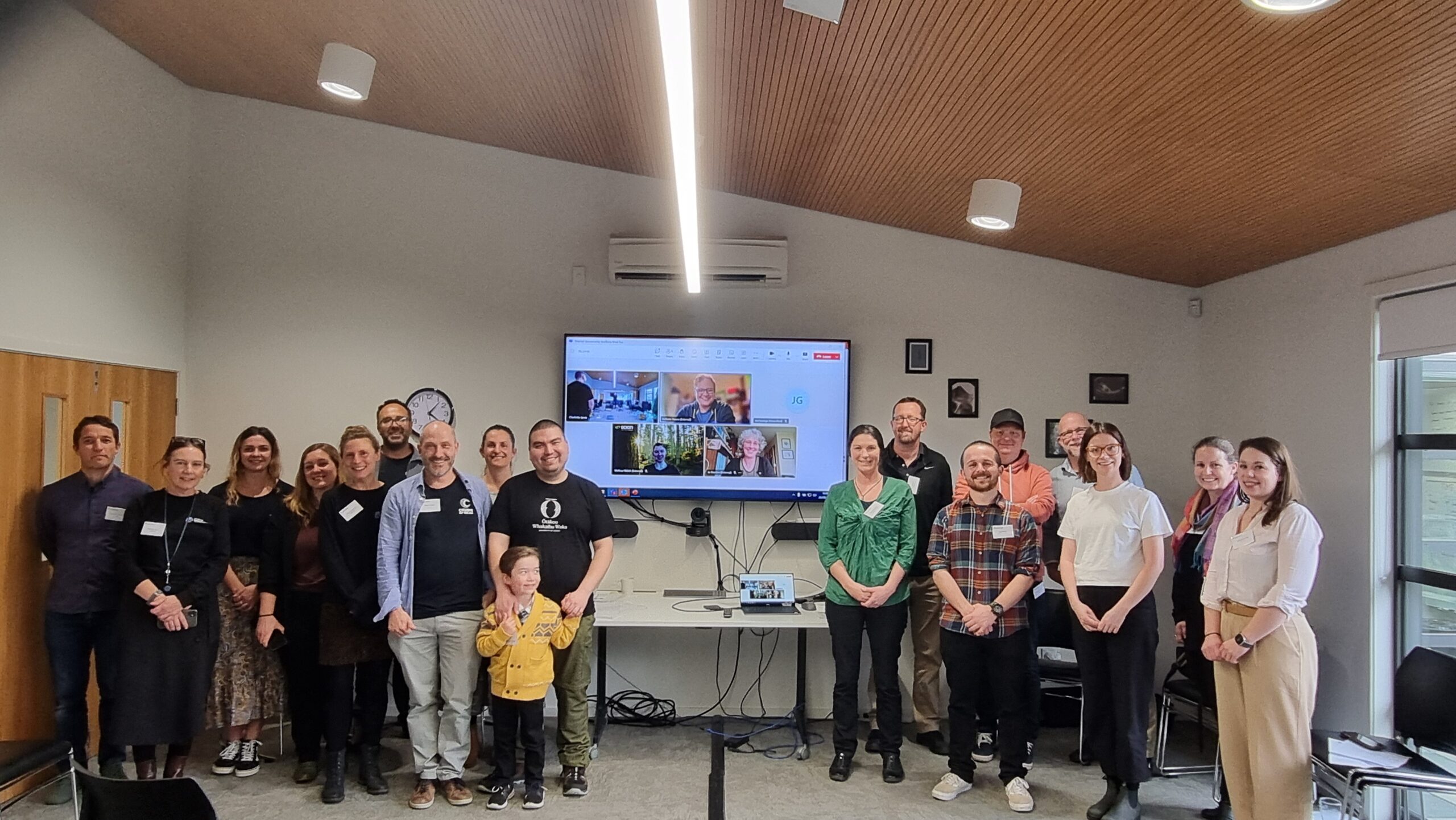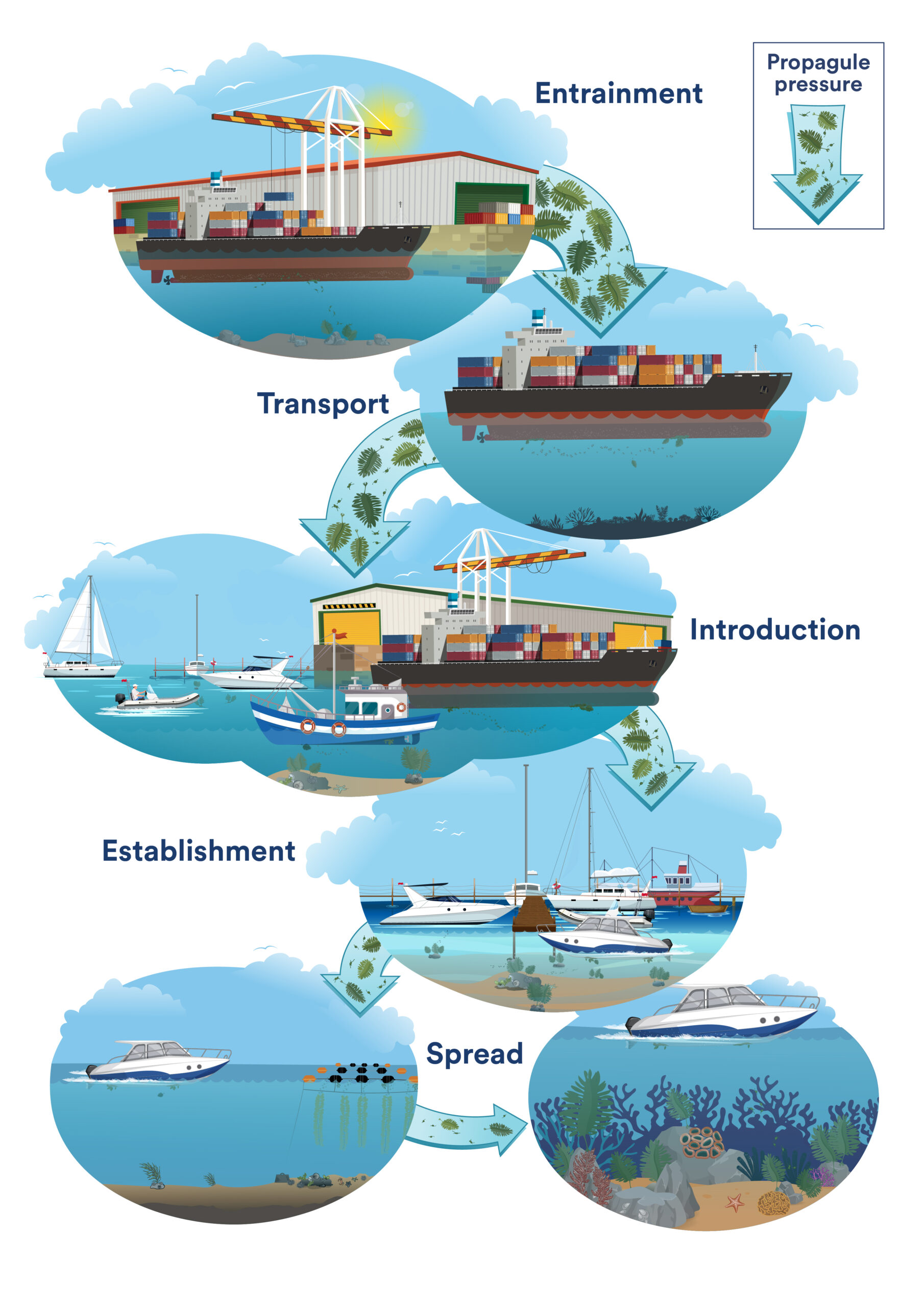Last year over 700 boat owners who have non-trailered boats moored in marinas around Aotearoa…
Biofouling formation and NIS recruitment on bio-polymers augmented with oyster shells
Globally, there is a growing demand for more eco-friendly replacements of conventional plastic polymers, ideally with fit-for-purpose properties and a well-understood life cycle. We wanted to evaluate the differential recruitment and succession of marine micro- and macro-organisms onto custom-made biodegradable polymers enriched with oyster shells recycled from the aquaculture sector. Shells are used in oyster restoration programs, particularly as a substrate on which seed oysters are stocked, to build or rehabilitate oyster reefs. Here, we incorporated different concentrations of oyster shells into a bio-based polymer to study potential effects on marine biofoulers’ recruitment and investigate how bio-polymers enriched with oyster shell filler perform in marine conditions. We selected polybutylene succinate (PBS) as a base polymer to manufacture shell-enriched bio-polymers, since it is biodegradable and easy to process or handle while mixing with other materials, and able to degrade at high rates over short periods of time. The general aim of this study was to investigate if these newly designed bio-polymers could eventually mitigate the biosecurity risks associated with MPD and provide a viable alternative to conventional polymers for marine infrastructure.
Using eDNA metabarcoding, our results revealed that following immersion in seawater, time played a more critical role than substrate type in driving biofouling community structures over the study period. In total, 33 putative non-indigenous species (NIS), with a lower contribution of NIS on shell-enriched substrates than unadulterated polymers.

Experimental design and study location. (A) In total, three PVC frames with 12 bio-polymers sheets, comprising four polybutylene succinate (PBS) control sheets, four PBS sheets enriched with 20% of oyster shell filler, four PBS sheets enriched with 40% of oyster shell filler, and four PBS sheets enriched with 60% of oyster shell filler were deployed alongside floating pontoon at the study location; (B) Sample processing as described in section 2.3; (C) Sample collection with established sampling time points.
The detailed information on the assay development, validation and trials with the non-scientist users has been published in Frontiers in Marine Science journal.




Comments (0)